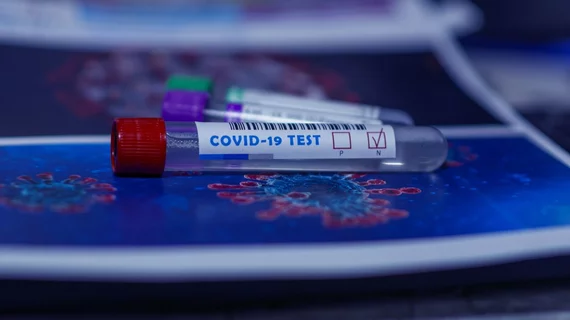NIH launches at-home COVID-19 test and virtual treatment program
A new at-home testing and treatment program for COVID-19 is on its way to selected communities.
The program, called the Home Test to Treat program, is being launched by the National Institutes of Health, in collaboration with the Administration for Strategic Preparedness and Response (ASPR) at the U.S. Department of Health and Human Services (HHS). It will provide free COVID-19 health services, including at-home rapid tests, telehealth sessions and at-home treatments. The program was first introduced in September 2022 by the White House and aims to make antiviral treatment available for eligible individuals who receive a positive test result to help prevent severe illness, hospitalization or death.
The program launch comes as the United States is grappling with a “tripledemic,” with rising cases of COVID-19, influenza and respiratory syncytial virus (RSV). There are currently more than 470,000 new weekly cases of COVID-19 in the United States, according to the latest data from the Centers for Disease Control and Prevention.
“At-home testing for COVID-19 is now widely available in the United States, as are antiviral treatments, and this program combines easy home access to both,” Bruce Tromberg, PhD, director of the National Institute of Biomedical Imaging and Bioengineering (NIBIB) at the National Institutes of Health and leader of the Rapid Acceleration of Diagnostics (RADx®) Tech program, said in a statement. “The Home Test to Treat program allows those who are sick an alternative to venturing out for testing or treatment, potentially reducing the spread of COVID-19 in the community.”
To start, up to 8,000 individuals in Berks County, Pennsylvania, will be the first to pilot the Home Test to Treat program later this month. Program organizers will identify best practices by gathering information from participants that can be used to scale the model to a larger program.
“Additional communities across the country will be selected to participate based on level of community need, access to healthcare treatment, expected COVID-19 infection rates and socio-economic factors,” NIH stated. “Through collaborations with local health departments, Home Test to Treat aims to offer services to approximately 100,000 people across the United States in the coming year.”
The program will be implemented through eMed, a telehealth services provider, with their services provided under a contract awarded by NIBIB contractor, VentureWell. eMed has administered millions of at-home telehealth session throughout the pandemic, and the provider will host the Home Test to Treat website for participants to sign up, report symptoms, receive telehealth and antiviral treatment delivery and coordinate telehealth-enabled test kits.
NIBIB has also contracted with UMass Chan Medical School to analyze data from participating communities.
“Home Test to Treat will promote equitable solutions and help to identify best practices that may save lives in this and future pandemics. In each community, the research team will identify and implement improvements that leave us in a much better position to respond to specific needs at the local, state and federal levels,” NIH stated.

